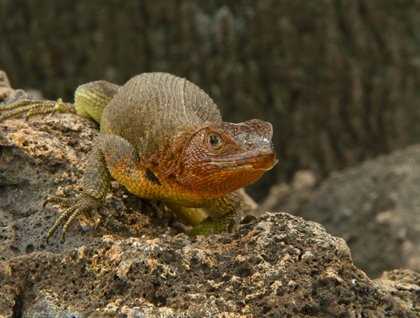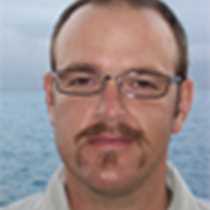As the sky lightens we find ourselves in a daydream with turquoise waters surrounding our ship, the National Geographic Endeavour. After a short introduction the previous day, we all are eager to explore this island. Intrepid snorkelers decide to try the deeper water as we swim along the coast of Gardner Islet that faces Española Island. Among the schools of surgeonfish and black-stripped salemas we come upon a kaleidoscope of invertebrates along a cliff wall that vertically dips to a depth of more than 100 feet. A Galápagos sea lion decides that we are worth swimming with as it shows us its agility, swimming in circles and blowing bubbles at the strangely dressed humans.
Later in the morning, the coralline sand beach welcomes us all and we encounter no less than 200 sea lions resting on the beach. Newborn pups move up and down the beach searching for their mothers as hunger pings in their stomachs. Females promptly and vocally deny any access to pups that are not their own, while large bull sea lions patrol their territories. We come upon a large bull that is bleeding from his neck; apparently he lost his battle over a breeding area, as he is high on the back beach area. Española mockingbirds flit about the beach, digging in the sand for sustenance as they constantly bleep out various intonations. As we leave the beach and head to our floating home, brown pelicans and frigatebirds glide overhead with a distinct direction of life.
Navigation brings us to the western area of Española where Punta Suarez is found. In this archipelago a diverse biodiversity is not found, however, fascinating mixes of unique species have developed in this “world among itself.” As we venture along the path we have to step over marine iguanas that are warming their tepid bodies after a foray into the cool waters to feed upon algae. Red-billed tropicbirds awaken our senses with a high-pitched screech while flying overhead searching for nesting areas along the cliffs. During this “dry” season, matted dry grass and skeletal croton bushes surround the boulders on the path. Mockingbirds follow us looking for any opportunities we may present i.e. food and water.
As we arrive at the southern cliffs, waved albatross chicks peek out from the dry brush expecting a parent to come and feed them. Tufts of down feathers are falling to the side as these chicks are showing their primary flight feathers. Adult albatrosses pair bond with their mates with a combination of beak “jousting,” neck swaying, sky pointing, and deep calls. These majestic birds soar by as they search for their chicks among the colony with an eventual haphazard landing. Salty sea spray swooshes by on our elevated platform as we walk among Nazca boobies, some with freshly laid eggs in the nest. As we return to our beginning and walk to our departure area, we take in the sights with the setting sun and it occurs to us that this incredible life continues on as if we had never set foot here.







